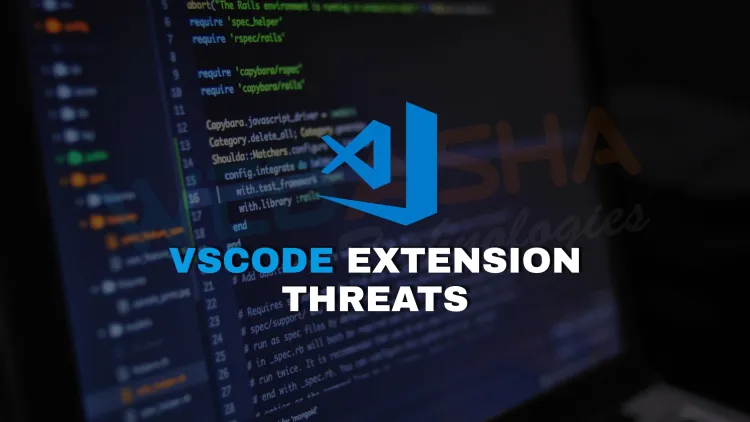What is the real risk behind malicious VSCode extensions like the Cursor IDE incident?
In July 2025, a Russian crypto developer lost $500,000 due to a malicious “Solidity Language” extension in the Cursor AI IDE. This fake extension used PowerShell scripts to install remote access tools like Quasar RAT and PureLogs stealer, allowing attackers to steal cryptocurrency wallets and sensitive information. Despite being listed on Open VSX with thousands of fake downloads, it went undetected until a forensic investigation by Kaspersky. Developers are now advised to verify extensions, check for unusual system behavior, and install antivirus protections to avoid similar attacks.

Table of Contents
- What Happened: $500,000 Crypto Theft Through Cursor IDE Extension
- How the Attack Worked — Step-by-Step Breakdown
- What Is Cursor AI IDE?
- Malware Types Involved in the Attack
- How Did Hackers Trick Developers?
- Real-World Example: How the Russian Crypto Developer Was Targeted
- Why This Matters for Developers in 2025
- How to Protect Yourself from Malicious Extensions
- Closing Thoughts
- Frequently Asked Questions (FAQs)
In July 2025, a serious cybersecurity incident shocked the crypto development community: a fake extension in the Cursor AI IDE led to the theft of $500,000 in cryptocurrency from a Russian developer. This attack shows how supply chain threats targeting software extensions can result in major financial loss, even for experienced users.
This blog explains the full incident, how the attack worked, and what steps developers and organizations can take to avoid similar threats.
What Happened: $500,000 Crypto Theft Through Cursor IDE Extension
Cursor AI IDE, an AI-powered development environment based on Microsoft’s Visual Studio Code, allows users to install extensions from Open VSX, an open-source marketplace.
In this case, attackers published a fake extension named "Solidity Language," pretending to be a syntax-highlighting tool for Ethereum smart contracts. The malicious extension secretly installed remote access and infostealer malware, allowing hackers to steal sensitive information and eventually drain $500,000 from the developer’s crypto wallet.
How the Attack Worked — Step-by-Step Breakdown
| Attack Stage | Description |
|---|---|
| Fake Extension Upload | A fake "Solidity Language" extension was uploaded to Open VSX. |
| Malicious JavaScript (extension.js) | Located in the .cursor/extensions directory; executed PowerShell scripts. |
| PowerShell Execution | Connected to angelic[.]su server to download further malicious payloads. |
| Remote Access Installation | Installed ScreenConnect for full remote access. |
| Payload Deployment | Uploaded additional malware files using ScreenConnect. |
| Malware Installed | Quasar RAT and PureLogs stealer were installed to capture sensitive information. |
| Crypto Theft | Attackers accessed crypto wallet credentials and transferred funds. |
What Is Cursor AI IDE?
Cursor AI IDE is a smart development tool similar to Visual Studio Code but enhanced with AI features. It supports the Open VSX registry, where users can download extensions to expand functionality.
Unfortunately, this open system also makes it easier for attackers to upload fake or malicious extensions.
Malware Types Involved in the Attack
-
Quasar RAT (Remote Access Trojan):
Allows attackers full control over the infected device, including running commands, capturing screenshots, and keylogging. -
PureLogs Stealer:
Specialized in stealing browser cookies, saved passwords, and cryptocurrency wallet information.
How Did Hackers Trick Developers?
-
Uploaded fake extensions with believable names like “Solidity Language.”
-
Used fake install counts — one version had 54,000 downloads, another nearly 2 million.
-
Manipulated Open VSX’s search ranking algorithm so the fake extension showed up before the real one.
-
Used Microsoft’s Visual Studio Code Marketplace with similar fake extensions like "solaibot," "among-eth," and "blankebesxstnion."
Real-World Example: How the Russian Crypto Developer Was Targeted
According to Kaspersky’s investigation:
-
The developer had no antivirus installed but thought their system was clean.
-
After forensic analysis, Kaspersky found extension.js executing PowerShell scripts.
-
The system was infected, leading to the loss of half a million dollars in cryptocurrency.
Why This Matters for Developers in 2025
The crypto industry relies heavily on open-source tools and third-party extensions. If even experienced developers can fall for such attacks, anyone using open marketplaces like Open VSX or Visual Studio Code Marketplace is at risk.
How to Protect Yourself from Malicious Extensions
Verify Every Extension:
-
Check publisher details and official links.
-
Avoid extensions with unusually high install counts without reviews.
Monitor System Behavior:
-
If an extension behaves unusually or doesn’t work as expected, investigate immediately.
Use Antivirus and EDR Tools:
-
Ensure devices have real-time protection.
-
Scan downloaded extensions before installing.
Prefer Official Marketplaces:
-
Download from trusted sources whenever possible.
-
Be cautious with Open VSX and similar repositories.
Check Source Code:
-
If you’re a developer, inspect the extension’s source files.
-
Malicious scripts often hide in files like extension.js or unusual directories.
Closing Thoughts
The malicious Cursor AI IDE extension attack is a clear reminder: even trusted tools can become attack vectors through fake add-ons and supply chain manipulation.
Kaspersky’s advice is simple but critical:
-
Always verify what you install.
-
Stay skeptical of inflated download numbers.
-
Monitor your systems and wallets for unusual activity.
Supply chain attacks targeting developers are not going away — and staying vigilant is now part of everyday security hygiene for IT professionals.














![Top 10 Ethical Hackers in the World [2025]](https://www.webasha.com/blog/uploads/images/202408/image_100x75_66c2f983c207b.webp)








